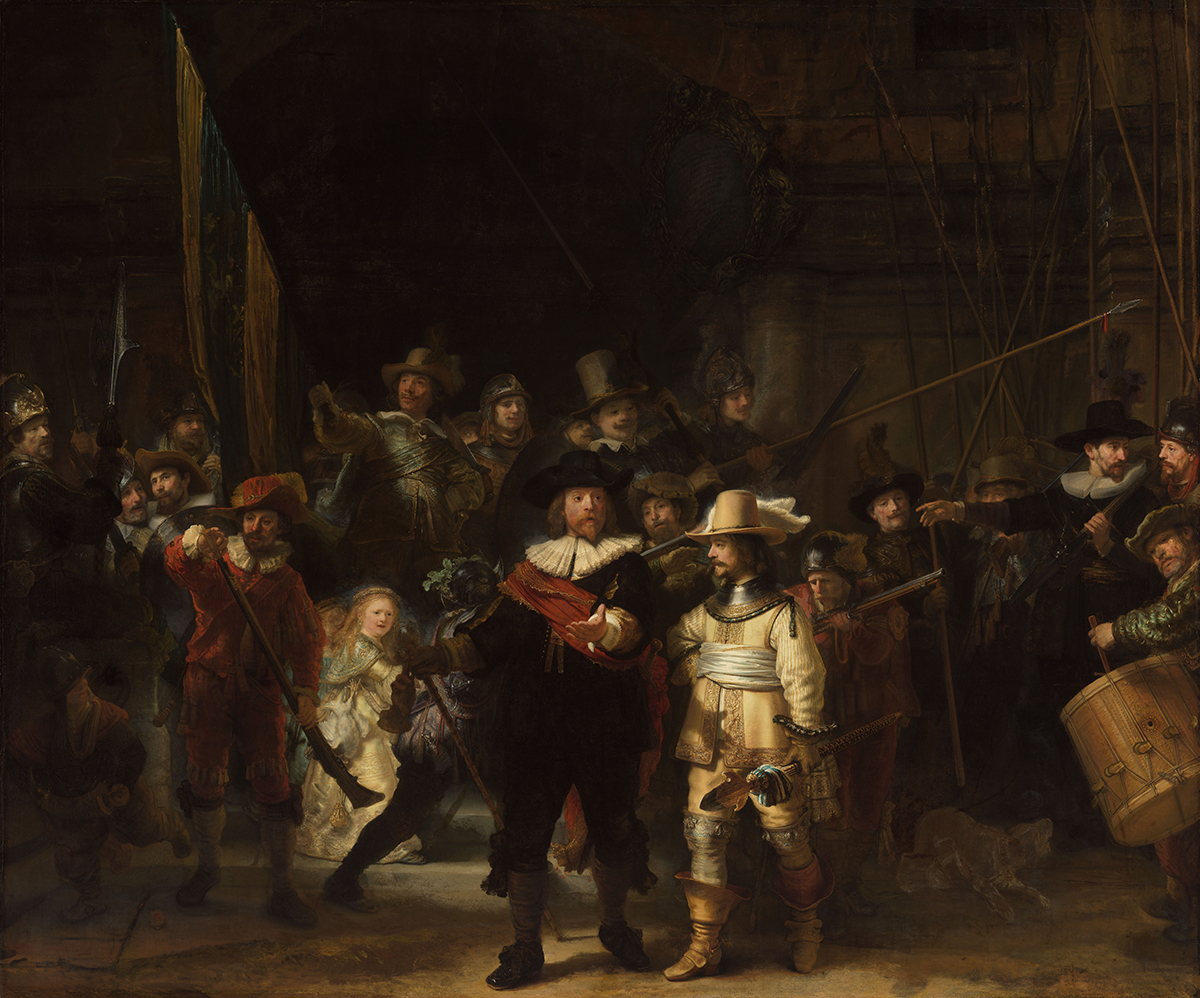
Rembrandt’s “The Night Watch,” known in earlier times also as “Militia Company of District II under the Command of Captain Frans Banninck Cocq” and “The Shooting Company of Frans Banning Cocq and Willem van Ruytenburch,” is easily one of the most recognized paintings in the world.
Being a national treasure at a top-flight museum means a lot of attention and maintenance so “The Night Watch” is going into the repair shop again.
In preparation for that trip, Amsterdam’s Rijksmuseum, longtime home to Rembrandt van Rijn’s “The Night Watch,” has commissioned its own copy of the picture, a digital behemoth.
A release from the Rijksmuseum says, “It is the largest and most detailed photograph of any artwork, and is four times sharper than its predecessor, which the Rijksmuseum published around 18 months ago.”
The subjects of the painting, a local militia group, commissioned it in 1639. The image calls to mind when a softball league team takes a team photo but with much more drama (and higher cost, since Rembrandt’s services didn’t come cheap).
Dated to 1642, the painting is unusually large — almost 12 feet high and over 14 feet wide. It was even larger in the past, having been trimmed to fit into a smaller space in 1715. It weighs in at just short of 750 pounds.
The camera used for the project wasn’t on a smartphone or even your typical digital SLR but rather one designed for such work, a Hasselblad H6D-400 MS which features a 100 megapixel CMOS sensor.
The result is almost 8,500 (8,439 to be exact) small 5.5 centimeter x 4.1 centimeter pictures, at 23 seconds per image, that have been digitally “stitched” together, totaling 717 billion pixels, creating a 5.6 terabyte image. For some perspective, that would probably exceed most free picture storage apps and won’t quite going to fit on a large thumb drive or be emailable.
This image is now available for the public to view online as well as in person in Amsterdam. Those interested can zoom in close enough to see the cracks in the paint. It would be interesting to see the digital picture on a 4K or 8K monitor or TV. (Unfortunately, I don’t have one of those, yet.)
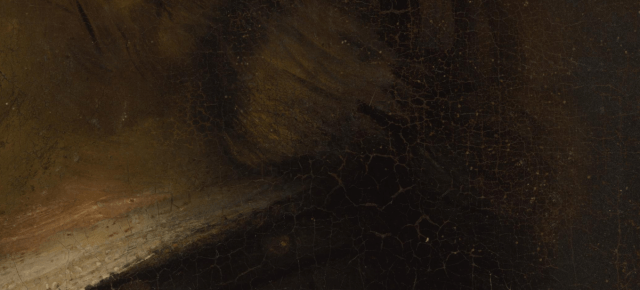
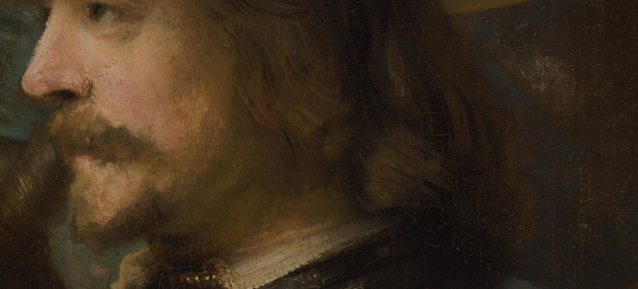
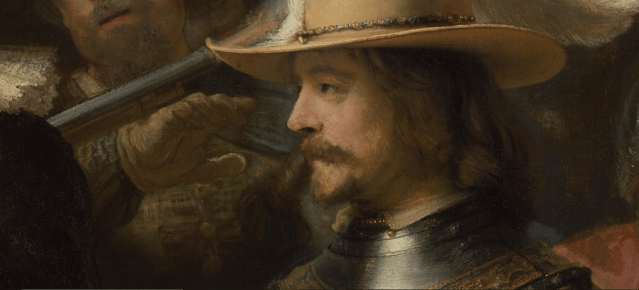
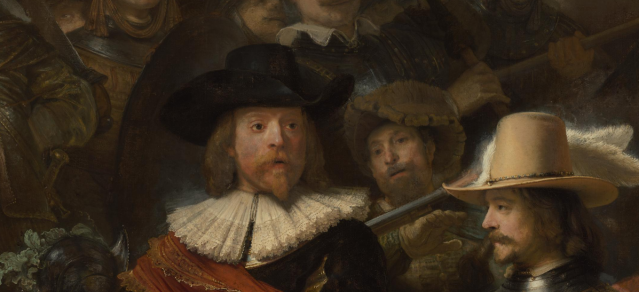
“The depth of field for each individual photograph was just 125 micrometers, or 0.125 mm. To ensure that each image was in focus, it was necessary to first scan the surface of the painting using lasers and very accurately calibrate the camera. After each photograph was taken, a neural network was used to check the image for color and sharpness,” the release adds.
Rijksmuseum Senior Scientist Robert Erdman offers an inside look at how a large painting is minutely “photographed” in high-resolution details. It’s not as easy as you’d think. Watch his keynote below.
Why This Matters in the Art World and Beyond
OK, so, what was the point of this labor-intensive and costly exercise?
Well, probably for some bragging rights on the national museum playground. It’s also notable that this hi-res copy will enable the Rijksmuseum to display the picture, sort of, while it is being worked on over the next few months.
But this new technology will also enable curators to monitor the condition of the picture over the long-term.
The release elaborates: “This new image is enabling the scientists involved in ‘Operation Night Watch’ to study the painting remotely in even greater detail. It will also make it possible to track future aging processes with even greater accuracy. This photograph is so sharp that neural networks can now be used to rapidly detect similar pigment particles or identify the lead soaps, for example, something that was not possible using the previous photograph.”
This process has already shed light onto the Dutch master’s techniques. For example, Art News’ Tessa Solomon reported in December that “researchers discovered a hidden sketch beneath the painting that revealed Rembrandt’s original composition, which experts said was placed directly onto the canvas.”
Additionally, she writes, the Operation Night Watch team (those restoring the masterwork with the aid of new tech) were able to “reconstruct the missing sections of the painting, which included two militiamen and a boy on a bridge on the painting’s left side, as well as a space without figures toward the bottom of the frame. The technology paired high-resolution images of the remaining composition with artificial neural networks that mimicked Rembrandt’s techniques. A copy of the work painted by Gerrit Lundens between 1642 and 1655 also proved critical to the reconstruction.”
READ MORE: Hidden Sketch Discovered Beneath Rembrandt’s ‘Night Watch’ (Art News)
LEARN MORE ABOUT ATTENDING THE 2022 NAB SHOW


